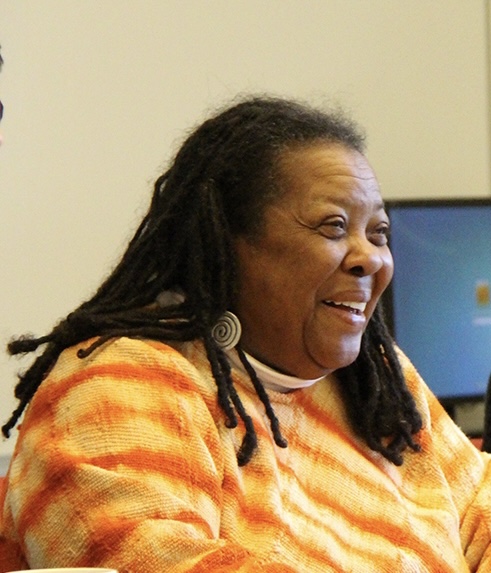
Five years ago, shortly after the Charlottesville atrocities, I awoke to an NPR rebroadcast of an interview of Ruby Sales, one of the original civil rights leaders, done by Krista Tippet, the host of On Being. The interview was done several years earlier, which made Ms. Sales message even more powerful. I listened, downloaded the transcript, and listened to the podcast three more times to make my own meaning out of Ms. Sales wisdom and connect it to my own life story. I wrote a long blog with my reflection.
I recently read an op ed in the New York Times that validated Ms. Sales wisdom with research. Fortified with facts, I’m delving into the SEL debates (which I’ve been avoiding deliberately for reasons that will become clear if you read on).
The piece that prompted me to bring a five years old remix into a new one was “There are Two Americas Now: One with a B.A. and One Without”, a guest essay by Thomas Edsall, who writes a weekly column on politics, demographics, and inequality. The point of Edsall’s piece was to explain how the Republican party has become dependent on a segment of white voters suffering from a “mortality penalty” – disproportionately high death rates associated with suicide, drug overdoses, and alcohol abuse combined with increases in several categories of disease, injuries, and emotional disorders. He offers lots of corroborating data on the mortality-penalty among working class whites and shifts in party allegiance. But it was the disaggregated black-white data that caught my attention. The comparisons of non-college whites to Blacks and Hispanics are so stark that I went back to read Edsall’s title.
For those of us in the youth development business, there is a second statement that could follow the colon: Blacks objectively worse off, whites subjectively angrier. This is the pain Sales was talking about.
Decades ago, middle-class whites diverted a class war by encouraging poor whites to side with them, effectively making race, not income, the currency of privilege. Institutional racism gave working class whites the edge on higher paying manufacturing and mining jobs. Technology and globalization eroded their advantage, particularly in the heartlands. And Democrats, eager to expand their base to include the growing numbers of brown and Black voters, lost their leverage with rural, heartland, non-college educated whites who saw their American dream fading while coming into focus in more diverse urban areas.
This political analysis of party shifts isn’t new. But the backdrop is important to understand the research that Edsall shares; it is critical to Sales’ framing of the big questions that must be answered:
“What do you say to someone who has been told that their whole essence is whiteness and power and domination? And when that no longer exists, then they feel as if they are dying…. Where is the theology that redefines to them what it means to be fully human? … as a Black person, I want a theology that gives hope and meaning to people who are struggling to have meaning in a world where they no longer are as essential to whiteness as they once were. How [can] we develop a theology or theologies in a 21st-century capitalist technocracy where only a few lives matter?”
Sales makes three more points which I reflect on in the 2017 blog:
We need to acknowledge outrage and anger. But there are two kinds of anger, and only one (redemptive anger) co-exists with love and moves us to transformation and human up-building.
We need a compassionate theology. Knowing that Black lives didn’t matter to whites, slaves created a theology to make sure their children knew their lives mattered within a community fueled by love of all people.
We need to cloak our children with love and equip them to withstand and stand up to hate.
So let’s pair these four themes with some of Edsall’s data and quotes from experts:
White Working-Class Pain is real and growing
“From 2005 to 2019, an average of 70,000 Americans died annually from deaths of despair (suicide, drug overdose, and alcohol poisoning). These deaths are concentrated among less than college educated middle-aged whites, with those out of the labor force disproportionately represented. Low-income minorities are significantly more optimistic than whites and much less likely to die of these deaths. This despair reflects the decline of the white working class. Counties with more respondents reporting lost hope in the years before 2016 were more likely to vote for Trump..” (Carol Graham, Bookings Fellow, 2021 paper).
Outrage and Redemptive Anger
“Despite experiencing more hardship [during the 2008 recession] 81 percent of Black Americans agreed with the statement ‘America will always continue to be prosperous and make economic progress,’ compared with 59 percent of whites; 45 percent of Black Americans said the country was still in recession compared with 57 percent of whites. Pew found that 81 percent of the Black Americans it surveyed responded ‘yes’ when asked ‘Is America still a land of prosperity?’ compared with 59 percent of whites. Asked ‘will your children’s future standard of living be better or worse than yours?’ 69 percent of Black Americans said better, and 17 percent said worse, while 38 percent of whites voted for better, and 29 percent said worse.” (2010 Pew Research Center study. This data is pre-George Floyd)
Black Theology of Hope
“…minorities, who had unequal access to those jobs and worse objective conditions to begin with, developed coping skills and supportive community ties in the absence of coherent public safety nets. Belief in education and strong communities have served them well in overcoming much adversity. African Americans remain more likely to believe in the value of a college education than are low-income whites. Minority communities based in part on having empathy for those who fall behind, meanwhile, have emerged from battling persistent discrimination.” (Graham).
Loving and equipping children to withstand and stand up to hate.
Researchers at Dartmouth and University of Chicago “found a striking difference in the pattern of behavioral problems among white and Black children from demographically similar families experiencing the financial strains of the 2008 Great Recession: ‘…our data provide evidence that the relationship between economic strain and internalizing problems is meaningfully different across white and Black children. In marked contrast to the white sample, the regression-adjusted relationship among the Black sample was of small magnitude and was statistically insignificant.’” (Leininger and Kalil, 2014).
Right now, in the education and youth development space we are seeing this balance of outrage and equipping children to stand up to hate play out in the culture war over SEL. To be clear, Black and Hispanic parents have their concerns about SEL instruction in schools as well. But this is not primarily because of a concern about what their children might learn, but about the fact that their children (who often present differently socially and emotionally, especially in settings in which they don’t fully feel the belong) will be assessed as deficient in yet another set of outcome areas.
Equipping children and teens to withstand and stand up to hatred, bigotry, prejudice, and general narrow-mindedness requires equipping them with every skill and competence…
Equipping children and teens to withstand and stand up to hatred, bigotry, prejudice, and general narrow-mindedness requires equipping them with every skill and competence in CASEL’s SEL wheel (self-awareness, self-management, social awareness, relationship skills, and responsible decision-making). This fortification starts with love, but it requires intentional, reflection-based guidance to develop the core competences needed to personally tackle Ms. Sales’ big question, “Where does it hurt?” and collectively tackle the transformative question, “Why does it hurt?”
It’s all about collective, intergenerational meaning-making. The more we take on this responsibility with compassion and courage, the less our teachers will have to try to tackle this alone.




No comment yet, add your voice below!